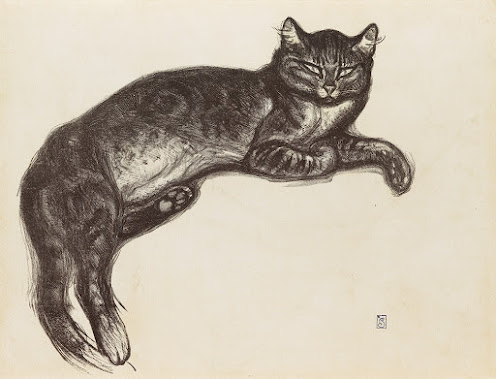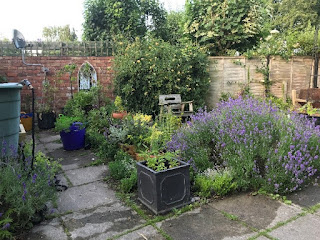Day 36
Have you noticed how publishers have latched onto a possible source of profit provided by the virus – People with lots of time will read more!
Social media is full of adverts for newly published crime novels, usually as series, often with book number one, either free or substantially discounted. On the face of it, this is good, lots of new books to read in my favourite genre.
But beware!
Because it is my favourite genre I have read many, many detective stories over the years and I am familiar with the names of countless crime writers. Suddenly it looked as though some old favourites had brought out a whole body of new work. Reading the synopses, I noticed a certain familiarity of plot. So I checked on the website Fantastic Fiction:
https://www.fantasticfiction.com/
These are not new books. They are old books retitled.
Most of them seem to be published by Joffe. I did some checking online and found that Joffe Books is an independent UK e-publisher. It has just done a deal with Severn House to republish titles from Severn’s extensive backlist.
In principle, I have nothing against this. Many of these books never made it to Kindle, but it is a bit naughty to retitle them. That smacks of deception and sharp practice. I know it is not illegal, somewhere in the book’s details will be a note of its original title, but it is in the nature of e-books that you will not be able to find this until after you have bought the book.
Meanwhile, I am reading lots of detective stories that I have not come across before and some that I am (happily) revisiting. Some are really good, but some are dire and it is quite clear why they disappeared on to the publisher’s backlist. For example, in one, the hero, a public school educated plumpish DS with an unruly mop of flaxen hair expressed his interest in the heroine by calling her ‘Old girl’ every now and then. I know who it sounds like, but it was written 2011, so unless the author was being prescient or perhaps had a crush on the Mayor of London . . .
Characterisation: Nul point! Romance: excruciating! Plot: pedestrian!
Tackle these reprints with care. I suggest, if you are getting your books on Kindle, that you sample them first.
Meanwhile Nigella has a new book out.
I have spent an afternoon of pure pleasure. Outside was sunny but cold. Inside warm and bright. At lunch time I received an unexpected present, Nigella Lawson’s new book, Cook, Eat, Repeat.
Having nothing to do which I couldn’t put off, I lay on my sofa and read it. It was so good that not even the assortment of cats taking turns to balance on my hip, with varying degrees of skill, could distract me. Serendipitously, the TV was replaying last night’s concert of Mendelssohn and Brahms which I also love.
I know some people are irritated by Nigella, but I find her warm and funny, and, most importantly she knows food. She also writes well, vividly, with a very distinctive voice.
She describes her joy in food:
The other day, I went to see some friends of mine whose eight month old baby has just started eating what we so unappealingly call solids. It was feeding time when I got there and the way his little toes curled up with pleasure every time a spoonful of mush was lowered into his mouth, the way he pumped his padded dimpled fists, as plump as overstuffed dumplings, and gurgled with almost drunken delight was such a joy (and yes, I repeat myself, but there is no other word adequate to the purpose) to witness. And a piercing reminder of what we can so easily lose. This was pure pleasure: it occupied his whole body, his entire being.
So, how to describe this book – it has recipes, so it’s a cookery book – but it is so much more. She is writing about how she feels about food, how she learnt about food, where she found recipes, how she adapted recipes, how you should respond to her recipes and ideas. If I were feeling pretentious I would say it is her philosophy with recipes, but I am not feeling pretentious and this book isn’t pretentious either. Essentially it’s about food, the enjoyment of food and the cooking of food. The cooking and preparation are as much a part of the joy as the eating.
There are nine sections:
· An Introduction
· What is a
Recipe?
She talks about recipes, where they
come from, how you should use them. She explains the language of her recipes.
This is invaluable as it takes much of the guessing out of cooking times.
· A is for
Anchovy
She sings the praises of the anchovy
and its infinite and varied uses. Anchovies divide people’s opinions nearly as
much as Marmite does. (For the record I love anchovies and loathe Marmite, but
I have known people who like both.)
· Pleasures
Pleasures are never guilty – Take it
from there.
· A Loving
Defence of Brown Food
The aesthetics of food. Cookery
photography’s insistence on being colourful has led to the devaluing of brown
food. You shouldn’t underrate food because it looks drab. Even the dullest
looking food can be delicious. She closes the introduction to the chapter: ‘To me all the recipes that follow are
beautiful in their brownness, and on them I rest my case.’
· Rhubarb
A comprehensive celebration of the
wonders of rhubarb.
· Much Depends
on Dinner
The virus and Lockdown struck while
she was writing the book and one of the results of that is that for the
foreseeable future, dinner parties as we knew them of old, are a thing of the
past. She says: ‘So, whenever we can have
friends around a table again, I think we have to build on what we have learned
through lockdown: that cooking and eating are daily ways to find pleasure and
to share it, and that companionship is as much a measure of a good dinner as
the food.’
· Christmas
Comforts
‘Even curtailed Christmas celebrations in my house will, I know, rely on
repetition and what’s more we’ll luxuriate in it. We human beings need ritual;
for me, at Christmas that need is met in cooking and at the table.’
· Make Ahead,
Store and Freeze Notes
Very useful
· Index
Very useful
Each chapter consists of stories and recipes followed by the recipes written in conventional recipe form.
I have just been reading other crits of the book and the lower ratings all seem to complain about a lack of recipes. As there are 100+ recipes, I suspect what they are really saying is that there is too much writing in the book, but she does say on the cover that it is stories as well as recipes.
If you like Nigella, you will love this book. If you don’t, I think this book might convert you.
Food
To be contrary, here is a sauce based on an Ottolenghi recipe:
Red Pepper Sauce
- 2 red peppers, seeds and stems removed, quartered
- 250g tomatoes, halved (If you can get the small Vittoria or Pomodorino tomatoes on the vine, they have a sweeter, stronger flavour than the larger varieties)
- 4 tablespoons/60 millilitres olive oil, plus extra for drizzling
- Salt and freshly ground black pepper
- 2 large heads garlic, tops trimmed just enough to expose the cloves
- 1 ½ tablespoons red wine vinegar
- 1 teaspoon maple syrup or pomegranate syrup
- Fine chopped red chilli (membrane and seeds removed) to taste
- Chopped parsley/chives/coriander for garnish
Method
1. Heat the oven to 220°C.
2. Place the peppers and tomato to a baking sheet and drizzle with 1 tablespoon oil, 1/4 teaspoon salt and a good grind of pepper.
3. Drizzle the garlic heads with a little oil, wrap tightly in foil and place them to one side of the baking sheet.
4. Roast for 35 minutes or until the pepper skins are well charred and the garlic has softened.
5. When cool enough to handle, peel and discard the pepper and tomato skins.
6. Add the peeled vegetables to a food processor. Squeeze the garlic cloves out of their papery skins (discarding the skins) and add them to the blender along with the vinegar, syrup, chilli, 1/4 teaspoon salt and a good grind of pepper.
7. Blitz for a few seconds, then, with the machine running, slowly drizzle in the remaining 3 tablespoons oil until incorporated and the sauce is smooth.
This is a very versatile sauce that can breathe life into the dullest of ingredients.
Music
This makes me feel much better about life:
https://www.youtube.com/watch?v=2jY8H8Zkh_8
Alex has a new CD out – Putting on the Ritz. It lifts your mood and takes you to a happy place.
This week’s image
I love Steinlen’s Cats. He understands the nature of cat.
This cat is replete yet fully alert. Beware any mouse or floating leaf that happens to waft pass.
Théophile Alexandre Steinlen (1859 –1923), was a Swiss-born French painter and printmaker. He started his professional life as a textile designer, but still in his early twenties he moved to Montmartre. He started frequenting Le Chat Noir. He began to make his living designing poster art.
In the early 1890s, he exhibited his paintings at the Salon des Indépendants. At this period they were mostly of landscapes, flowers, and nudes were being shown at the Salon des Indépendants.
Montmartre and its tough way of life was a favourite subject of his paintings. He was also a sculptor, especially of cats. Steinlen included cats in many of his paintings, publishing a book of his designs, Dessins Sans Paroles Des Chats.
He also produced illustrations that were highly critical of the social conditions in France. He was forced to produce these under an assumed name for fear of arrest.











Lovely read. I get Joffe recommendations but many are second or even third rate
ReplyDelete